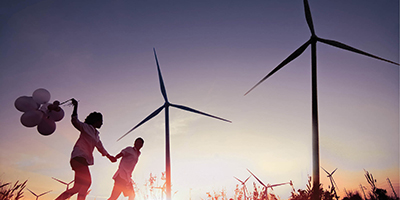28 January 2023
R2 Wind: Exploring wind farm's contribution to balancing
RES will need to participate in all balancing reserves markets. This pilot project investigated the technical capability of wind farms to regulate their power infeed in real-time to balance the active power in the grid (in collaboration with Eneco, WindVision and Enercon).
Why this project
The massive integration of renewables, like solar and wind generation, into the electricity grid represents a challenge for maintaining the balance between power generation and consumption. In future, fewer conventional generating units are expected to run during periods of high input from renewables. Since these units currently deliver the majority of balancing services to TSOs, further diversification of the resources delivering those services to the grid will be required.
This pilot project produced promising results for future participation of wind farms in the secondary control market (automatic Frequency Restoration Reserves) in Belgium: the capability of wind farms to perform fast regulation of their production, with relatively high accuracy, has been demonstrated.
Approach
The project investigated the technical capability of wind farms to regulate their power infeed in real-time to balance the active power in the grid. This will facilitate the further integration of renewables into the grid and thereby help to meet the European 2020 energy and climate targets.
Within the framework of this project, over a period of roughly 2 months Enercon turbines at WindVision’s Estinnes wind farm made a technical contribution to delivering secondary control power to the Belgian grid by continuously adapting the turbines’ active power output to a set point defined by Elia. Eneco, as the wind farm’s balancing responsible party, helped Elia by nominating the facility’s available secondary control capacity. The project was set up in such a way that no interference with the balancing market resulted.
Contributing to balancing
Via this project, Elia assessed the wind farms’ potential to participate in balancing the power system and, more specifically, offer secondary reserves. Wind farms’ technical capabilities have been assessed and points for improvement identified. The project demonstrated that wind farms can technically modify their power output relatively quickly and that their available flexibility can be forecasted to an acceptable level. Wind farms are expected to continue being able to contribute towards balancing provided that they provide a more economical option than traditional balancing sources.
Results
The results of the pilot project are very promising as regards the future participation of wind farms in the secondary control market (automatic frequency restoration reserves, or AFFRs) in Belgium. Wind farms’ capability of swiftly regulating their generation, with a relatively high degree of accuracy, has been demonstrated. The pilot project also identified some technical and market-related aspects that will be further investigated with a view to facilitating wind farms’ commercial participation in this market in the future.
Partners
 |
 |
 |



